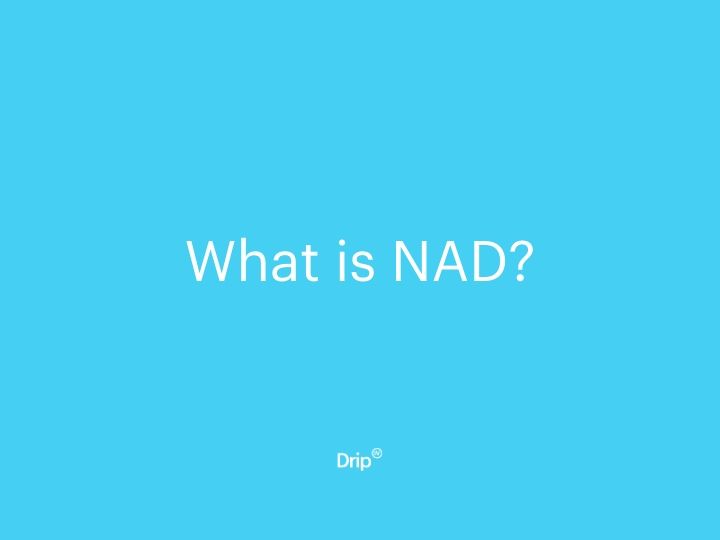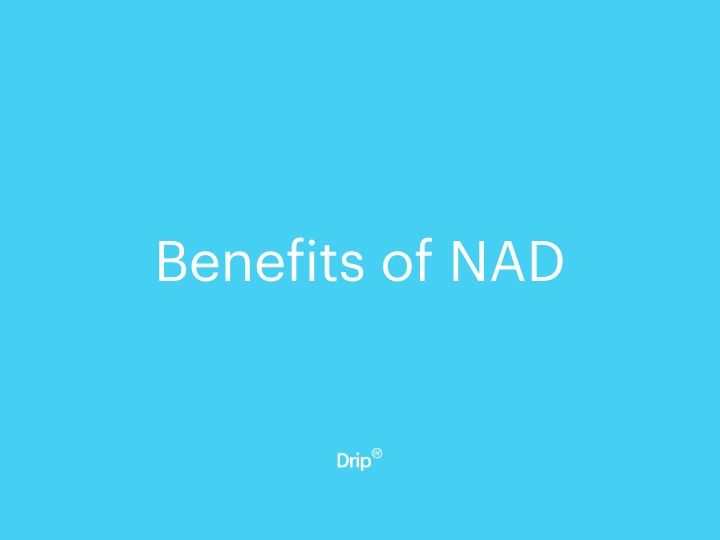
Nicotinate-diene-de-adenine (NAD+) is an enzyme involved in redox reactions. NAD+ is essential in non-redox proteins NAD+-dependent enzymes like Sirtuin CD38 and poly ADP ribose polymers. NAD+ influences cellular processes, including the metabolism pathways, the transformation of chromatin, and cellular senescence.
Where is NAD+ found in the cell?
The NAD+ cells are organized in a variety of different sections. This substance can be found within the fluid of the gelatinoid that cover the cellular walls and membranes (cytoplasm), cells’ batteries, and cellular cytoplasm, where they store genetic information such as genes. These subcellular pools of NAD+ are independent of each other, whereas enzymes involved in NAD degradation are highly categorized.
How is NAD+ produced by our cells?
In biology, the processes that generate molecules are termed biological synthesis. For NAD+, three known routes are available: the kynurenine pathway (de novo), the Preiss-Handler pathway, and a recovery pathway. This kynurenine-mediated phosphorylation is involved in the production and release of tryptophan, an amino acid usually heard about during Thanksgiving because it can be associated with turkey. Tryptophan is found in animal foods, including beef, cheese, eggs, and fish. The conversion of tryptophan into NAD+ takes place inside the aquid cytosol outside the cell’s cellular component (organe). Preiss-Handler pathways begin with nicotinic acid.
NAD+ biosynthesis precursors
Pre-treatment with NAD+ precursors may help prevent the onset or deterioration of old age. NAD+ does not affect NAD+ levels by taking oral supplements. Interestingly, the use of precursors like NMNs or NRs may provide the benefit in some respects of this. NMN supplements can reduce bacterial infections. It is probably caused mainly by increased NAD+ levels in the body. In mice, NMN helps prevent obesity. The advantages are available as a mouse model of Alzheimer’s disease cognitively impaired and neuroinflammatory disorders too.

What happens when NAD+ levels are reduced?
Numerous studies have shown lowered NAD+ concentration during disturbed nutrient conditions like obesity and aging. Low NAD+ concentrations cause metabolic problems. This can lead to diseases such as obesity resistance. Obesity causes hypertension and diabetes. Metabolic issues due to low NAD+ levels are cascading downward. Hypertension and other heart problems cause harmful pressures on the brain and push cognitive impairments. Targeting NAD+ metabolism provides the best nutrition to prevent aging and metabolic disorders.
What is NAD+ made of?
NAD+ contains two nucleotides that the phosphate group links. Adenine and nicotinamides are found in both of these nucleotides.

How is NAD+ used in cells?
Beyond the main enzymes, NAD+ has been used as a cofactor in biochemical reactions. There are nearly 300 enzymes reliant upon the NAD+ protein. NAD+ reflects essential cellular functions, maintaining and repairing DNA to protect genomic stability and autophagy. Collectively, this function is vital in maintaining systemic wellness.
How do cells make NAD+?
NAD+ mediated several fundamental biological processes and continues to be very popular. NAD+ can be produced, metabolized, and reused in the cells to ensure optimum levels. Some cell types, usually livers, synthesize NAD from scratch using multiple food sources. NAD + was made de novo with vitamin-like precursors, like NAD and L-tryptophan. Most of the cells that produce tryptophan cannot express all of those enzymes required for conversion to NAD+ from tryptamine. It is also possible to reuse or salvage the nitinamide (NAM) from enzymes whose enzyme uses NAD+.
How does NAD+ work in the body?
NAD+ is a shuttle bus that transfers electrons from molécules to cell structures and performs various processes. Its molecules contribute to different metabolic reactions to produce energy from a cell. Without an NAD+ level, cells can no longer generate energy for survival or function. Another function of NAD+ includes controlling circadian rhythms, which determine our sleep cycle.
NAD+ levels drop with age
The decrease in the levels of nAD+ indicates an essential impact on metabolism and age-related diseases. DNA is accumulated over time. Damaged genetic blueprints activate several proteins – notably enzymes – PARPs. The enzyme nAD+ in their system allows PARP titration and activation of the cellular repair function. Depletion of NAD by PARP-activation at the onset of age appears to be a cause of varying diseases. Most researchers have concluded that PARP contributes the most to the list. Our immune cells also consume NADD+. The more effective the immune system, the larger the NAD+ it absorbs.
Cellular NAD+ metabolism
NAD+ is highly compartmentalized within cytoplasmic mitochondria and nuclei, and the main cellular pools are in the mitochondria. These pools are independent of each other and regulate enzymes in NADD+ biosynthesis and degradation in particular. It has been identified as a metabolite that regulates many cellular processes, including cellular functions. Firstly, the reduction of NAD+ will be essential for the energy balance of cells.
Beyond the main groups of NAD+–
Aside from NAD+-consuming enzymes discussed previously, NAD+ is widely employed as cofactors and substrates for biochemical reactions. There are over 300 enzymes that depend upon NAD+ for their activity. NAD+ also acts as a mediator in the metabolism. Various cellular processes include biochemical pathways in the liver, including the maintenance and repairs of DNA for genomic stabilization, epigenetic regulation, and the formation of cell walls. Collectively they serve a critical purpose in maintaining systemic health and homeostasis.
NAD+ biosynthetic pathways
NAD+ has been derived either de novo by the kynurenine pathway or through nicotinic acid (NA) via the Preiss-Handler pathway. Aside from NAD+, kynurenine pathways utilize l-tryptophan to create kynurenic acids, neurons, and cytotoxic acids. Notably, it still needs to be understood how de novo syntheses can reduce NAD+. Outside the liver, almost every cell does not synthesize the enzyme that converts tryptophan from NAD+ to tryptophan using the kynurenine pathway.
Consumption by PARPs
It comprises 17 proteins with poly(ADP-ribonosyl) phosphatase activity. The phosphorylation of NAM in vitro by PARP enables the generation of the nasc-dependent cleavages of NAM. ADP-ribose is a byproduct containing ATP. ADP-ribose is the Only PARP1, PARP2, and PARP3 that are locally found in the nucleus of the cells when DNA damages them. This is important during DNA damage repair.
Consumption by SARM1
Originally, SARM1 was in the NAD+ glycohydrolases and Cysses group, along with CD38 and CD155. In SARM1, the enzymes interacting with proteins primarily involve enzymatic interactions. Under physiological conditions, how SARM1 regulates NAD+ remains a mystery. In addition, NAD1 degradation is involved in the degeneration of the axonal tissues in the absence of vascular damage.
Consumption by CD38 and CD157
CD38 and CD157 have multiple coenzymes which contain Glycosyl-hydroxylase and ADP-ribosyl-cyclase activities. A glycohydrolysis of NAD+ is the primary catalytic reaction, which cleaves a glycol-side bond in NAD++ to create NAMA and APD-ribosome. CD 38 enables the substitution of NAM in acid to NA and produces nitinic acid adenine dinucleotide (phosphate).
Box 2 | Metabolic catabolism of NAD+ via NNMT and NADK
Nicotinamide N-Methiotransferase (NNMT) – An enzyme containing S. s. MNAM has been oxidized by the aldehyde oxidases and produced by the N1-methyl-2-pyridine-5 carboxamide and N1-methyl-4-pyridine-3-carboxamide. NNM-converting NAM to MNAM effectively diverts NAMA from nicotinamide dinucleotide and impacts NAD+ levels.
Box 1 | Generation of NAD+ via the NAM salvage pathway
NAM salvage pathways produce NAD+ adenine from precursor NAM or upstream vitamin precursor nicotinamide ribosome. Because NAD + has no permeation in the body, the idea is that the dietary precursors include nicotinic acid, NAM NR, and tryptophan which are imported directly into the cells and made available for dietary NAD+ biosynthesis.
Consumption by sirtuins
The Sirtuin family has gained tremendous popularity since they regulate metabolic processes, stress response, and aging biology. The Sirtuin family of mammals comprises seven genes and proteins (SIT1–SIT7) with different subcellular localisations (nucleus for SIRT1 and SIRT6; nucleus for SIRT7; mitochondria for SIRT6).
Potential Benefits
NAD+ has a significant effect on the chromosome’s mitochondria and genes. NAD + levels decrease dramatically as we get older. As we become older, NAD+ declines, and at age 50, your NAD level is twice as much as when you were ten years old. Studies show that decreased levels of the molecule cause age-causing diseases, including cardiovascular disease, heart disease, and neurodegeneration. NAD+ may cause age-related illness due to poor metabolic function.
Heart function
The elasticity of arterial walls serves to buffer the force of heartbeats. Despite age, arteries stiffen, contributing to elevated blood pressure, the most significant cause of cardiovascular problems. According to CDC data, one American dies of cardiovascular disease every 37 seconds, according to CDC data. High blood pressure causes an enlarged heart and blockage of arteries which can result in a fatal stroke. Increasing NAD+ levels protects and promotes cardiac function. NAD boosters in mice increased NAD+ to its original levels to prevent heart damage caused by low blood flow.
Aging
The Sirtinoins are the guardians of the genomes, which protect organisms from degradation. When the genes detect physical stress, such as exercise and hunger, they send troops to defend. Sirtuins preserve genome integrity, stimulate DNA repairs, and show anti-aging-related properties for models, such as increasing life span. NAD+ is the energy-driven gene. The same as cars cannot run without fuel; the sun requires NAD+. In yeasts, worms, and mice, the increase in the levels of NAD+ is associated with a higher lifespan.
Metabolic disorders
According to the World Health Organization, obesity can become an epidemic. Obesity may be linked to other metabolic diseases, including diabetes, and has caused over 1.7 million deaths worldwide. Aging and calorie restriction are harmful to our body’s NAD+. Studies show that NAD+ boosting tablets effectively reduce diet-induced weight loss in rats but not in older mice. Other studies reversed diabetes-related effects in mouse models showing new techniques for tackling metabolic problems.
Muscle function
Mitochondria are a vital component of our workout performance. ND-+ helps maintain healthy mitochondrial function and constant energy consumption. Increased NAD+ levels may enhance the mitochondria of the mouse. The study shows that mice taking an NAD+ booster are leaner and that running on the treadmill can help them increase their fitness. Aging animal models with higher levels of NAD+ are outperformed by their peers.
How is NAD+ related to Aging?
The NAD+ metabolite is decreased as the aging process continues, and the enzyme responsible for the NAD synthesis is altered. Several cellular functions which affect or influence aging — including metabolic dysfunctions, DNA repair failures, and genomic instability — are controlled by NAD+ levels. A reduction in NAD levels during aging may also be attributed to aging-related conditions such as vascular disease such as atherosclerosis.
NAD+-dependent mechanisms in aging
Upon aging, NAD+ levels decrease and varying enzymes involved in NAD+ degradation and biosynthesis change. The association between NAD+ and the ten hallmarks of age has been extensively analyzed. This decline has also influenced age-related diseases such as atherosclerosis, arthritis, diabetes, and cancer.
Adaptive immunity
Like innate immunity, human aging reflects a decreased capacity to develop successful adaptive immuno-responses through alterations to the adaptive immune cells, aka immuno-encouraging cells. Aging can cause imbalance or deformation within the immune system, including decreased naive T and B cell levels, loss of the T cell antigen-related receptor variety, and a decrease of virtual memory T cells. Despite its role in promoting T cell differentiation, the regulatory role of NAD+ and NAD+-consuming proteins are generally undefined, and the role of these proteins may be unclear.
Neurodegeneration
Aging is strongly linked to most neurodegenerative disorders and is accompanied by reduced brain levels. NAD depletion appears in several models with increased aging exhibiting neurological degeneration and neurodegenerative illnesses. Despite recent studies, the causes underlying NAD+ losses in the brain and neurodegenerative processes remain unknown. NAD+ has several pharmacological benefits, and its neuroprotective function has been questioned by several studies in the past decade and the present study.
Metabolic dysfunction
Obesity has become an epidemic worldwide. Among obese people, the most common metabolic diseases are hypertension, diabetes, obesity, and gout. They have higher risks of type 2 diabetes, cardiovascular disease, or nonalcoholic liver disease. Consequently, obesity accelerates aging, resulting in shorter lifespans. Several recent studies demonstrate that the NAD+ pathway can therapeutically help treat metabolic disease and aging.
Deregulation of immune cell function
Inflammage has been recognized as a hallmark of aging and a principal driving agent for the disease. Chronic inflammation influences metabolic processes, including sugar and phospholipid synthesis and insulin sensitivity. The recent increase in interest in immunometabolics demonstrates that NAD+ has little influence on inflammation and cell function.
Innate immunity
Chronic low-grade inflammation occurs due to aberrant activated immune cells, increased expression of proinflammatory molecules such as TNF and IL-6, and activated immune peptides such as T cells. Moreover, it is now known that the changes in macrophage activation phenotype-based polarisation are the key factors behind these inflammatory processes.
Cellular senescence
Cell cycle arrest cellular senescence occurs when the body is deprived of energy and nutrients by metabolic, genotoxic cellular stress. The SASPs have shown that the increased expression of inflammation-mediated proteins, cytokines, and chemokines, contributes to the onset of aging.
Does NAD+ increase lifespan?
Yeah, that’s true if it were mice. Adding boosters to NAD-like proteins may increase the lifespan and longevity of mice. The increases in NAD+ levels can cause mild effects with longer lifespans for rats. Using NAD+ precursor NR, researchers have found that the supplement increases mouse lifespan by about 5%. A boost in the level of NAD+ can help prevent dozens of age-related diseases. Prevention of aging causes long-term health, and longer lifespans increase health span.
How can I increase my NAD levels?
The NAD+ can also increase naturally by accelerating its synthesized substances – by stimulating the enzyme activity of NAD+ or introducing NAD+ precursors.
Supplementing with NAD+ precursors
Many NAD+ enhancing medications can be taken with NNMn – NR supplement. NR is a precursor to the NAD+ biomolecule NMN and NR. One of the similarities is its use of the NAD+ biosynthesis salvage pathway. The molecule has also been safe to consume in our bodies. Researchers conducted tests in the human brain, which showed NR increases NAD+ levels. The NMN study shows it has the potential to improve nAD levels in rodents. Researchers say NMN transporter is found in the gastrointestinal tract of animals. The underlying gene of this transporter can be found on human skin. The NNM transporter can use this expression on humans.
Eating healthy
Healthy eating is important for your mental well-being and increases nutrient levels for your NAD+ levels. Mild physical stress on the body, including fasting and exercise, may increase NAD+ production. A diet of calorie-restricted foods stimulates NAD+-dependent genes and prolongs life considerably. Calorie restriction also benefitted in varying ways for different types of mice. Numerous animal studies indicate the ability of the animal to enhance its NAD+ levels by exercising. Researchers have found that aerobic and resistance exercise may reduce age-dependent enzymes in muscle tissue.
Searching for heat sources
While spending time in the sun may not benefit your health and nutrient levels, it may help improve your NAD levels. The heat of a sauna or bath can cause your heart to beat faster, causing the body more energy to cool down. The increase in NAD+ output is necessary to provide the energy required.
Moving your body
A simple but effective way to improve NAD+ is exercise. Increasing physical activity helps increase the amount and strength of your DNA-building protein. It is possible to boost NAD levels depending on the intensity of the workout. Keeping yourself active helps prevent premature aging.
Staying away from the sun’s harmful rays
It may reduce NAD+ levels when you get too much sunlight. Direct sunlight can increase the body’s ability to absorb NAD+ to repair damage caused by UV. To prevent skin irritation and burn, try to avoid going outdoors at a low temperature during the day.
What enzymes consume NAD+?
Several different RNAs contain RNA and are also used for conversion.
Sirtuins
Sirtuins have emerged as key actors in the efforts to understand and characterize the effect of NAD+ levels on aging and increasing the stories of their activity in cellular processes. Throughout their discovery, sirtuin was highly valued for controlling metabolic pathways, stress response processes, and aging biology. Overall, sirtuins have emerged as crucial actors in the efforts to understand and characterize how NAD+ levels affect cellular homeostasis in a wide variety of cellular processes that impact aging and boost their activity is a crucial focus of therapies addressing these challenges.
NADasese
CD38 and CD158 are multi-functional enzymes in the cell. CD38 regulates essential cell functions like immune-cell activation, survival, and metabolic process. Notably, aside from NAD+, NNM emerges as an alternative substrate to CD38, whereas CD157 uses NR as its substitute substrate. It is unclear if CD157 has any enzymatic function in cellular aging. Recent findings show, however, that CD158 and CD38 can be upregulated in aging tissue and possibly contribute to age-associated conditions like arthritis and cancer.
PARPs
Human PARP proteins are 17 different proteins. ADP-ribose is cleaved by PARP and produced through this process. Targeting PARPs, particularly PARP1, is an important therapeutic tool for the aging sector. Although PARPs can affect aging, the decline in NAD+ levels requires further investigation.
Conclusion
NAD+ is an essential nutrient for your health and well-being. It can increase NAD+ levels by eating healthy, exercising, and spending time in the sun. Additionally, avoiding direct sunlight exposure and avoiding the sun’s harmful rays may help reduce NAD+ levels. Enzymes that consume NAD+ include sirtuins, NADases, and PARPs. Targeting these enzymes may be a key focus of therapies addressing aging. Overall, maintaining healthy NAD+ levels is essential for preventing premature aging. Looking for NAD+ treatment in San Diego or across greater California? Drip IV Therapy can help. Book now!





